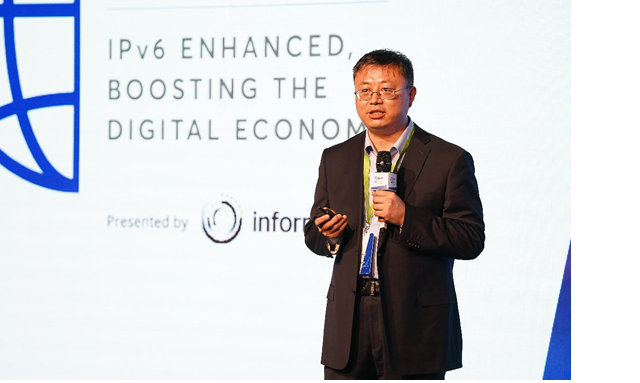[pro_ad_display_adzone id=”104567″]
Today’s trend towards service cloudification has been driving the application requirements of various industries. These requirements are in turn accelerating the development of the IP network framework, said Zhenbin (Robin) Li, Huawei chief IP Standard Representative and IETF IAB member.
Delivering the keynote, “Progress of IPv6 Enhanced Standard and Industry,” at the 23rd edition of MPLS SD & AI Net World Congress (the MPLS Forum) in Paris, Li indicated that IPv6 Enhanced (IPE) will usher in a new era of 5G and cloud-networks.
IPE is an innovative IP network system oriented to the 5G and cloud era. It builds on IPv6 with comprehensive capability upgrades centered on automation, security, ultra-broadband, low latency, wide connection, and certainty. With IPE, operators will be able to fully meet the requirements of 5G transport and cloud-network convergence, according to Huawei.
IPE includes protocol innovations such as SRv6, network slicing, in-band measurement, new multicast, and application-aware network, as well as technology innovations in network intelligence, such as network analysis, automated optimization, and self-healing. IPE offers several advantages like abundant addresses, differentiated SLAs, network programmability, visualization, and high security.
IPv6 Enhanced innovation has evolved from 1.0 (network programming)/ 2.0 (SLA assurance) to 3.0 (application-driven networking). Clouds and networks have been converging; networks and computing power have been converging; and this means network competitiveness should be application driven, Li said in the keynote.
Huawei has been promoting the implementation of IPE in terms of standards contribution, technology innovation and implementation, industry promotion, and commercial deployment. Huawei has contributed 59 percent of the total SRv6 standards and obtained a seat in the IETF IAB.
In another keynote, “APN6 Enables Application and Network Collaboration,” Li also said the innovation of IPv6 Enhanced technologies oriented towards emerging services such as 5G and cloud is increasingly becoming a consensus in the industry. Innovative IPv6 Enhanced technologies, such as SRv6 and IP network slicing, have been deployed and applied on more than 100 sites worldwide, significantly enhancing the differentiated service capabilities of networks.
There is now widespread consensus that SRv6, which sits at the heart of IPv6 Enhanced protocol innovation, will be the technical foundation of target networks. These developments demonstrate industry confidence in SRv6.
Li also elaborated on other emerging technologies such as application-aware networking (APN) and computing-aware networking (CAN) — developed along with the trend of in-depth convergence between clouds and networks and between computing power and networks — as well as the development of the standards industry.
The MPLS Forum hosted senior experts and analysts from the SRv6 industry — covering device suppliers, operators, third-party independent test organizations, standards organizations, and analysts and deliberated on SRv6 technical standards, industry cooperation, and commercial use progress, among others. In addition, they shared insights into the status quo, commercial deployment progress, and development trends of SRv6.
The event also witnessed the launch of a series of books and videos on IPv6. The book, SRv6 Network Programming: Ushering in a New Era of IP Networks, presented by Li, who is also its editor-in-chief, systematically reviews SRv6 innovation and technical standards. It provides a vivid explanation of SRv6 network design and deployment and provides a model for combining theoretical research with practical application, playing an important role in promoting continuous IPv6 innovation.
Li’s second book IP Network Slicing is scheduled for publication later this year. Network slicing is an important part of IPv6 Enhanced technologies, so this book can be thought of as a follow-up to SRv6 Network Programming: Ushering in a New Era of IP Networks.
The publication of these books will further boost IPv6 Enhanced development, help build a flourishing IPv6 Enhanced technological ecosystem, and speed up the construction of a digital China, according to Huawei.
Rajani Baburajan

